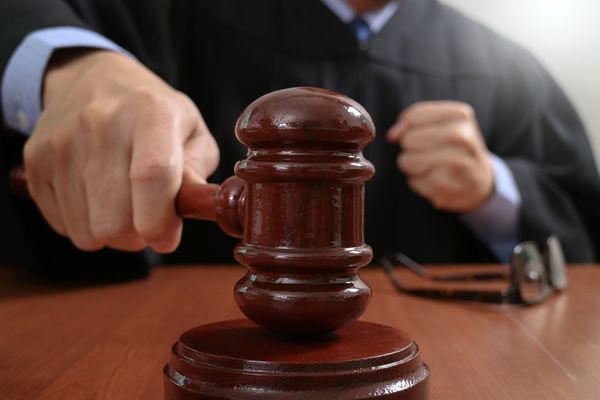2.1.4
Civil Rights Cases
Civil Rights Cases in the Supreme Court, 1883
Civil Rights Cases in the Supreme Court, 1883
Black people began to bring cases of discrimination to the Supreme Court in order to assert the rights that had been given to them by the Fourteenth Amendment and the Civil Rights Act.


African American cases
African American cases
- In 1883 black people took 5 cases to the Supreme Court to sue transportation companies, hotels and theatres for refusing to allow them into ‘white only’ facilities or refusing them entry altogether.
- The black people took their cases to court as they believed that the treatment that they had suffered was unconstitutional and went against the 1875 Civil Rights Act.


Supreme Court ruling
Supreme Court ruling
- The Supreme Court did not rule in favour of the claimants. In fact, they stated that black people were no longer to be ‘special favourites of the law’.
- The Supreme Court ruled that the federal government should not intervene over racial discrimination on the part of individuals or organisations.
- The Supreme Court said if federal governments did intervene in such matters it would be unconstitutional.


Impact of the Supreme Court Ruling of 1883
Impact of the Supreme Court Ruling of 1883
- This ruling was a major blow to the Civil Rights of the African Americans; it legitimised the racist segregation laws.
- The ruling of the Supreme Court caused many riots and protests across the United States.
- The Supreme Court did not uphold the 15th Amendment and did not enforce the voting rights of black people.
- In 1873 the Slaughter-House cases gave the States greater authority over civil rights limiting the power of the Supreme Court.
Plessy v. Ferguson and Williams v. Mississippi
Plessy v. Ferguson and Williams v. Mississippi
Despite segregation and fear of the KKK, black people still tried to challenge the way in which they were treated. One way they did this was to try and prove in a court of law that the ‘Jim Crow’ laws were unlawful and unconstitutional.


Plessy v. Ferguson, 1896
Plessy v. Ferguson, 1896
- The constitution made very clear that ‘all men are equal’ and this was used to try and prove that the segregation laws were illegal.
- Homer Plessy tried to prove the illegality of segregation laws in 1896.
- Plessy sat in a white-only area of a railway train and was subsequently arrested.
- He took this to America’s Supreme Court and stated that his treatment was not lawful.


The outcome of Plessy v. Ferguson
The outcome of Plessy v. Ferguson
- Plessy lost his case against the segregation laws. The Supreme Court stated that the black facilities were of an equal standard so there was no reason he couldn’t sit in them.
- This was a massive win for white supremacists who supported segregation laws.
- In fact, it caused the Jim Crow Laws to spread further and legitimised segregation.


Separate but equal
Separate but equal
- The term ‘separate but equal’ was coined as a result of Plessy v. Ferguson.
- This phrase suggested that it was acceptable to segregate people based on race because everyone was equal in the eyes of the law.
- Yet, their separation did not suggest they were equal. Furthermore, the separate facilities for black people were not of equal standard to those of white people.
- Black schools, for example, consisted of little more than a glorified shed with poor facilities. White schools were large, purpose-built and made of stone, as represented in films such as Grease.


Williams v. Mississippi 1898
Williams v. Mississippi 1898
- Williams was on trial for murder and he protested against the fact that there were no black people on his jury.
- The law stated that only men eligible to vote were allowed to sit on juries. This meant that many black people were not able to sit on a jury because they could not vote.
- Williams argued that this was due to the unfair poll tax inflicted on the population.
- In 1890 Mississippi State ruled that the poll tax was not discriminatory.
Cumming v. Board of Education 1899
Cumming v. Board of Education 1899
Cumming took his case to the Supreme Court in 1899 despite the obvious challenge and likely injustice.


Cumming's case
Cumming's case
- Cumming objected to the fact that the state of Georgia unevenly distributed money to schools.
- Much of the money meant for education was used to develop white-only schools. Black schools were left heavily underfunded.
- Cumming stated that this was a direct violation of the 14th Amendment as the facilities were not equal.


Educational inequality
Educational inequality
- The judges of the Supreme Court did not deem Cumming to have a case and approved the segregation of schools.
- Southern whites (judges included) held the widespread belief that black people deserved a limited education system.
- This belief was even supported amongst the Northern States.
- Education for black people often centred around industrial skills rather than academic subjects.


The significance of the ruling
The significance of the ruling
- The fact that the Supreme Court continued to go against the 14th amendment showed the Southern States that they could also ignore it and continue the Jim Crow Laws.
1‘Free at Last’ 1865-77
1.1The Thirteenth Amendment
1.2Radical Reconstruction, 1867-77
2The Triumph of ‘Jim Crow’ 1883-c1890
2.1Jim Crow Laws & Civil Rights Cases
3The New Deal and Race Relations, 1933–41
3.1Failure to Address Black Grievances
3.2The New Deal
3.3The Second World War
4‘I have a dream’, 1954–68
4.1Civil Rights Activities, 1954–63
4.2Civil Rights 1964-68
4.3Malcolm X & The Black Panthers
5Obama's Campaign for the Presidency, 2004–09
5.1The Late 20th Century
5.2Barack Obama & his Political Career
5.3Reasons for Obama's Victory
Jump to other topics
1‘Free at Last’ 1865-77
1.1The Thirteenth Amendment
1.2Radical Reconstruction, 1867-77
2The Triumph of ‘Jim Crow’ 1883-c1890
2.1Jim Crow Laws & Civil Rights Cases
3The New Deal and Race Relations, 1933–41
3.1Failure to Address Black Grievances
3.2The New Deal
3.3The Second World War
4‘I have a dream’, 1954–68
4.1Civil Rights Activities, 1954–63
4.2Civil Rights 1964-68
4.3Malcolm X & The Black Panthers
5Obama's Campaign for the Presidency, 2004–09
5.1The Late 20th Century
5.2Barack Obama & his Political Career
5.3Reasons for Obama's Victory
Unlock your full potential with Seneca Premium
Unlimited access to 10,000+ open-ended exam questions
Mini-mock exams based on your study history
Unlock 800+ premium courses & e-books